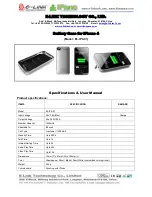
1. Make sure the sensor is installed on its own dedicated circuit, free of
motor loads such as HVAC equipment, kitchen appliances or garage
door openers.
2. It is not recommended to wire sensors in parallel. More than one sensor
wired together makes them difficult to troubleshoot. Disconnect multi-
ple sensors and test separately.
3. Keep all people completely out of the detection pattern to make sure
the sensor is not detecting them.
4. Make sure sensor is located below and
as far as possible from its lights. Heat
from the lights may trigger the sensor.
Solution: Move sensor below and
away from the lights.
5. Make sure lights are not reflecting back into sensor. Check for white or
reflective surfaces close to the sensor.
Solution: Aim sensor away from reflective
objects, or move the objects and
lower sensitivity.
6. Make sure sensor is not aimed within 20 feet of a road or sidewalk.
Passing cars will activate sensor.
Solution: A 20 foot safety zone and reduced sensitivity
are recommended to avoid activation from passing cars.
7. Heavy rain, snow or high winds may activate the sensor
occasionally. Reduce sensitivity control slightly until problem stops.
8. Moths can be attracted to the lights and fly close to the sensor causing
triggering. Reducing the sensitivity may help.
9. Check Solutions #3, 4, 5, 6, 7, and 8 under “If Lights Do Not Turn Off”.
Technical Tips:
Lights Turn On and Off Inappropriately
1. Check that lamps and fixtures work. Compare wiring to the wiring
diagram in this manual. Check that the power is on.
2. If installing during daylight, remember that the sensor will provide 2
minutes of Test Time after power is turned on. After 2 minutes, the
sensor will switch to Automatic Mode and will not work during day-
light if the photocell control is turned to the night only position (moon
symbol).
If you require 2 more minutes of Test Time, turn the power off for at
least 10 seconds and back on again.
If you require the sensor to operate
both day and night, turn the
SUN/MOON control knob clockwise
to the sun and moon symbol.
3. Check that lights from another source, such as adjacent porch lights,
garden lights or street lights are not in the sensor’s view. The sen-
sor’s photocell may detect the light and deactivate “daylight”.
If you desire the sensor to operate
in higher ambient light levels, turn the
SUN/MOON control knob counter-
clockwise toward the sun symbol.
4. Was sensor wired hot? If so circuitry may have been damaged.
Technical Tips:
Lights Do Not Turn On
20'
safety
zone
TIME
12 MINS
–
SENS
TIME
12 MINS
–
SENS
18
17
WRONG OK!






























